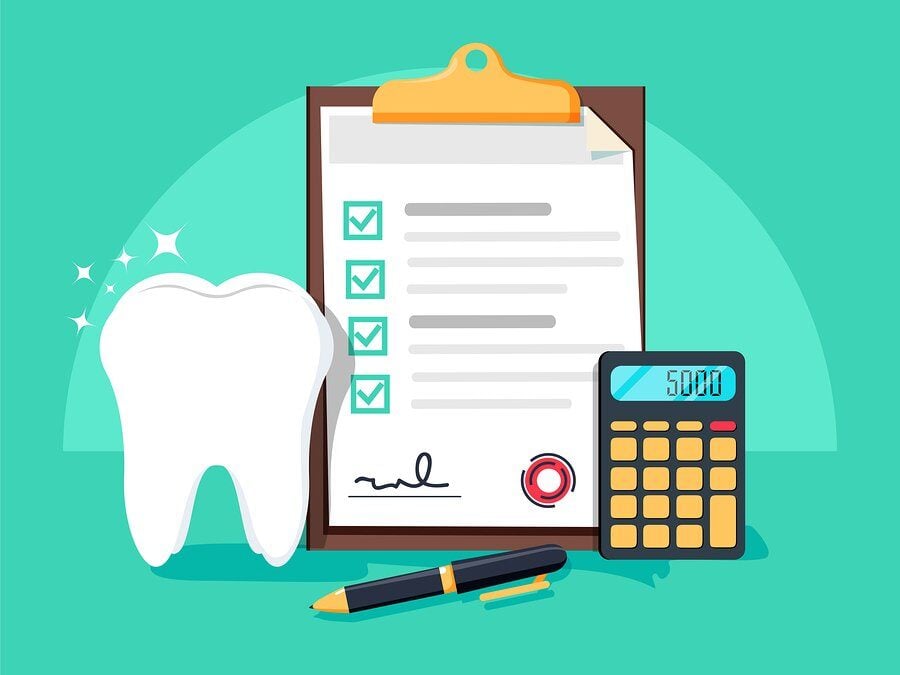Dental Insurance 101: Understanding Your Dental Insurance Plan

According to the Centers for Disease Control and Prevention, about 27 percent of American adults have untreated cavities, while over half suffer from some level of gum disease. Unfortunately, many of these people fail to seek treatment, because of affordability issues.
Dental insurance can help offset the high cost of dental care by paying for restorative treatments, along with preventative exams that catch minor problems in their infancies. To get the most from your benefits, however, it's important to understand your policy.
Understanding Key Terms
Dental plans include basic terminology relating to out-of-pocket costs, limitations and exclusions. To better understand your plan, it helps to know the meanings of these key terms.
Deductible: Similar to auto insurance, a dental plan may include a set amount you must pay before you receive any benefits.
Maximums: This is the most money a plan will provide for dental care during a specified benefit period (usually one calendar year). Once you reach this cap, you will have to pay any treatment costs for the remainder of the period.
Coinsurance: In relation to fee-for-service benefit plans, the coverage will include a set percentage of the treatment cost, leaving you responsible for the remaining balance. Coinsurance refers to the part that you pay once you've reached your deductible.
Copayments: When people have DHMO plans, they pay a fixed dollar amount - called a copayment - for specific services instead of a percentage. When you enroll, the insurer will provide a list of covered treatments along with associated copayment amounts. These plans also typically have no maximums or annual deductibles.
Annual maximum: The total amount an insurance plan will pay for an individual enrollee's dental care in a given period, usually a full calendar year.
Lifetime maximum: The total cumulative amount an insurance plan will pay for an individual enrollee's dental care for the life of the plan. Lifetime maximums typically apply to specific services, including orthodontic treatments.
Pre-Treatment Estimates: For especially extensive or costly dental treatments, you can ask your local dentist to submit a pre-treatment estimate to your insurer. This is a good way to get an idea of how much you will end up paying out-of-pocket.
Exclusions and Limitations: While dental plans can reduce the financial burden of treatment, they don’t usually extend to every single dental need. Most plans limit the number of cleanings you can get in one year, while others may refuse to cover certain procedures, even if they are recommended by your dentists. You should carefully identify any potential limitations or exclusions before you settle on any one plan.
Preauthorization: Some insurers insist on approving specific recommended treatments before agreeing to pay for them. If there's any doubt, ask your dentist to check with your insurer to verify coverage before you schedule a procedure.
Open access: A kind of dental plan that allows enrollees to visit the dental professional of their choice. Some open access plans will also allow enrollees to seek treatment from a specialist without having to obtain a referral from a primary care dentist.
Closed Network Plan: With these types of insurance plans, coverage is limited to a pre-selected or pre-assigned network of dentists. In other words, to receive benefits, you must visit a dentist from a specified list provided by the insurance company. Due to these limitations, it's important to check with your dentist to make sure he or she is a part of your network before scheduling an examination or dental procedure.
Reimbursement Levels: A fee-for-service plan will offer certain categories of coverage, with each being tied to a specific percentage. For instance:
- Preventative and diagnostic procedures are usually covered at 80 to 100 percent. From an insurer's point of view, this gives policyholders incentives for getting routine cleanings and checkups, which reduce the likelihood of more costly procedures down the road.
- At the next level are basic procedures which are reimbursed at a slightly lower percentage, followed by major procedures, which receive an even lower reimbursement percentage.
Preventive and diagnostic services: A specific category of dental services, which typically include routine cleanings, oral evaluations, fluoride treatments and X-rays. The same coinsurance percentage will usually apply to all preventive and diagnostic services
What is Considered Basic Dental Care?
Most dental plans will offer 80 percent coverage for basic dental services, including fillings, non-routine x-rays, extractions, sealants and certain periodontal treatments. The typical plan will also cover the entire cost of preventive procedures, such as oral exams, routine cleanings, routine x-rays and sealants. On the other hand, some dental treatments, such as crowns, dentures and bridges, would not be considered basic dental care. In turn, the typical dental plan will only offer 50 percent coverage or less for these procedures.
To learn more about the insurance and payment options we accept, visit your local Gentle Dental office page or our insurance and payment page.


